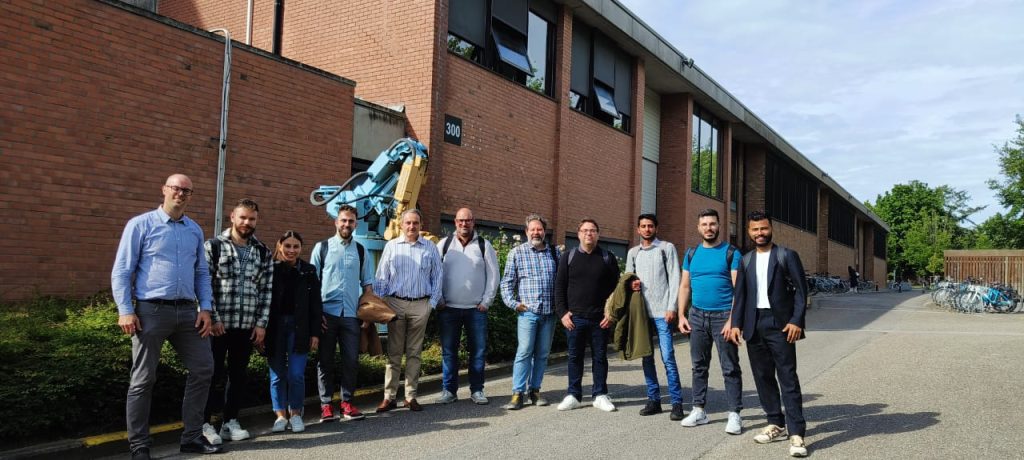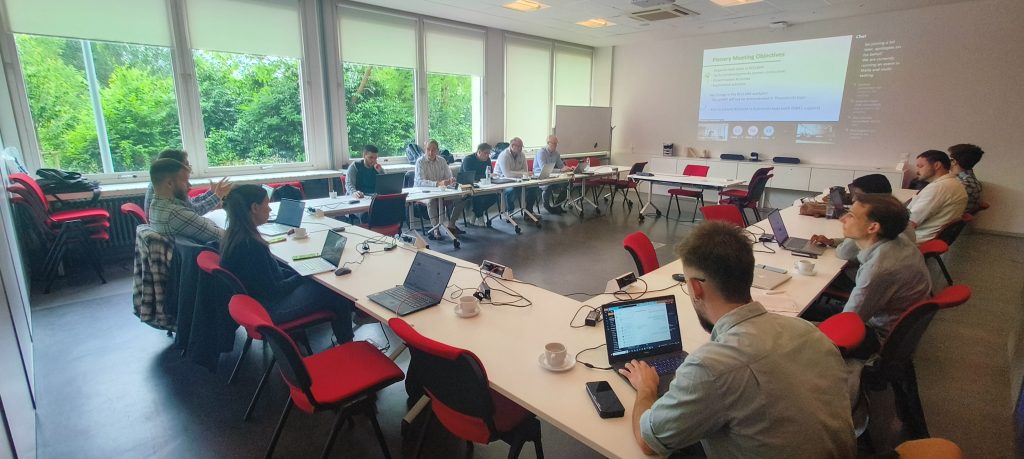
Key Messages
1. New, multi-cup suction gripper and HAVCO gripper developed and ready for testing
2. New approach for prMRF encoder synchronisation developed and ready to support RGB-HSI data fusion
3. Synthetic data generation will be used for augmenting the image-dataset of the new products entering the market
4. The Alpha version or the Recycling Data Game (RDG) has been developed and tested by users of the target group
5. Participation at ECOMONDO, in Rimini, Italy in November 2024
6. Discussions to expand networking activities with help of Horizon Results Booster
7. prMRF to be deployed in Kefalonia next year to monitor operations and improve functioning iteratively
New grippers with better pick ratio, open training for consortium partners on trustworthy AI, and new approaches to better identify waste were some of the key messages from the second RECLAIM General Assembly that took place in Leuven, Belgium earlier this week. Consortium partner KU Leuven hosted the consortium members at the Department of Mechanical Engineering campus.
The main objective of the General Assembly is to review past actions, implement corrective measures, and chart a collaborative course for the future.
It is also a time to reconnect with each other in person and strengthen the interdisciplinary collaboration, especially in a multicultural team that comes from different European countries speaking multiple languages and with varied socio-cultural sensibilities.
And that’s what we did! Our collaboration is our strength.
Here are some of the highlights from the GA
PrMRF to be deployed in Thessaloniki next year
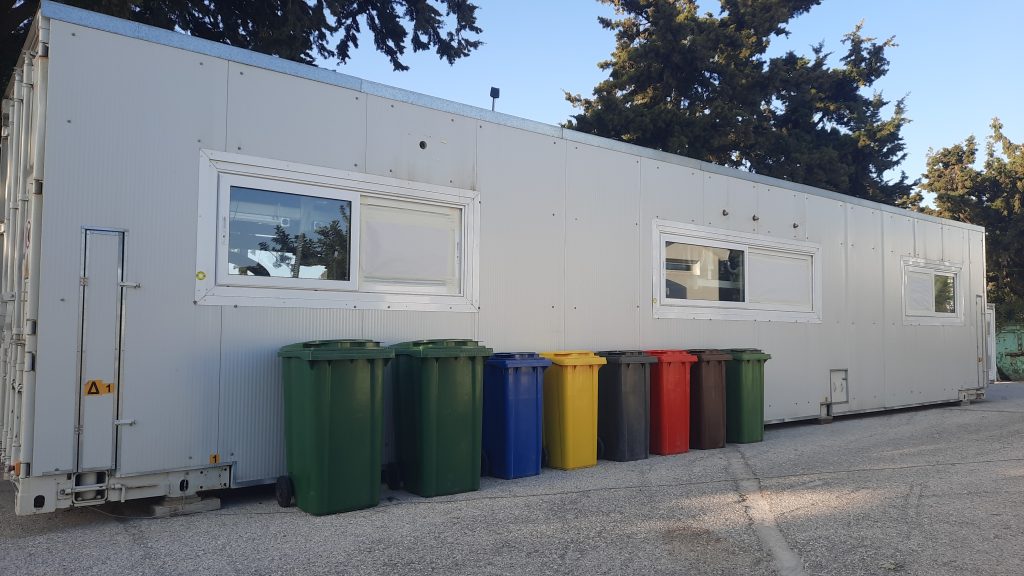
Collectively, the consortium explored the opportunity to display the prMRF in Thessaloniki, Greece early next year to give a public demonstration of the prMRF operations in three different material recovery scenarios as outlined in the Grant Agreement. The idea is to show the public how waste will be processed by the prMRF, thereby demonstrating in real-time that the prMRF has fulfilled the scenarios. Following this the prMRF will also be transported to Kefalonia where its operations will be monitored for 6 months and iteratively improved.
Re-trained neural networks using Mask R-CNN for improved waste identification
Alongside this, the consortium also discussed, for example, how to improve and optimise current waste identification processes, such as re-training neural networks using Mask R-CNN that helps in image segmentation and provides the bounding box to accurately identify waste materials in the prMRF.
Neural networks check how realistic the synthetic images (computer generated images that mimic real-world images) look. By generating many artificial single-object images and keeping only the most realistic ones, the project improved the training of Mask R-CNN, thereby ensuring accurate and efficient waste detection and sorting.
Additionally, IRIS Technology solutions also developed a tool that speeds up annotation of images, used both from FORTH and ROBENSO. “We can somehow work fast with annotations of data, and in parallel, to avoid endless annotation, we have developed a model of synthetic data generation based on information of waste objects,” said Michalis.
In parallel, a new approach for prMRF encoder synchronisation has been developed and is ready to support RGB-HSI data fusion. Aside from this, synthetic data generation will be used for augmenting the image-dataset of the new products entering the market.
New, more robust, lighter, modular HAVCO gripper introduced
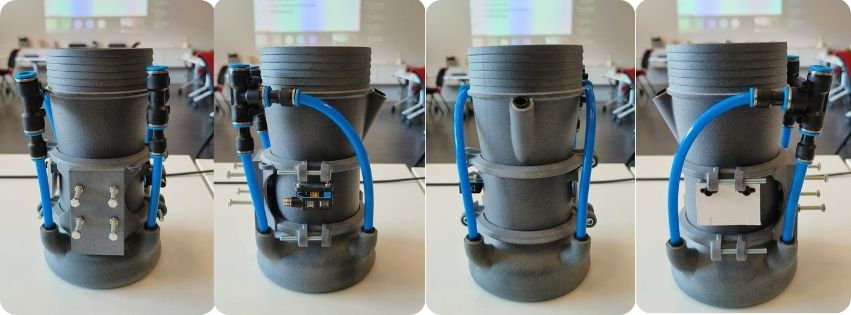
The new HAVCO (High Airflow Vertical COnveying) Gripper utilises pressured air and the Coanda effect to generate an airflow which is used to lift and remove objects from the conveyor belt. The developer of this gripper, Bart Engelen from KU Leuven, explained that due to the non-prehensile nature of the manipulation, this new grasping technique doesn’t require complex grasp pose estimation strategies.
As a result, using this gripper offers several benefits, including significantly reduced processing times for removing objects from the conveyor belt. Additionally, it is lighter, more modular, more robust, and more maintenance-friendly than its predecessor, thereby maximising the potential of the RECLAIM sorting system.
Following the General Assembly gathering, Dr Jef Peeters from KU Leuven gave the consortium members a tour of the KU Leuven facility, providing an overview of the ongoing research efforts in the domain of demanufacturing and recycling being conducted by the LCE (Life Cycle Engineering) Group of KU Leuven.
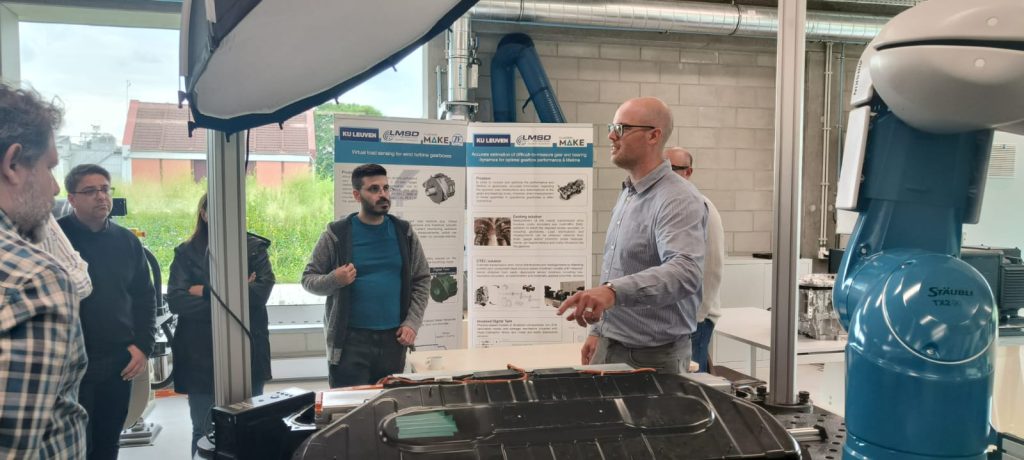
Members of the KU Leuven research team arranged a short vision-based robotic grasping and manipulation demo using a 6-axis robot and a two-fingered parallel gripper.
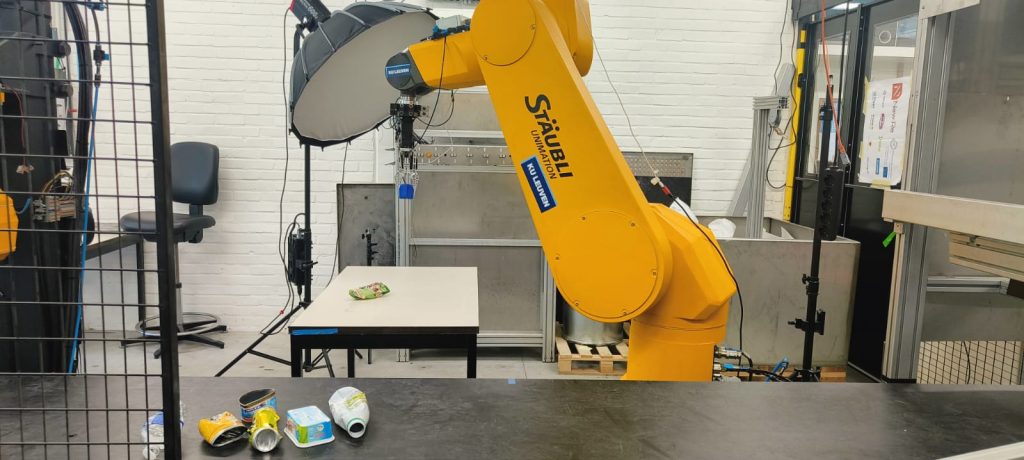
They highlighted the potential of utilising advanced AI models and algorithms for object detection, segmentation and grasp pose estimation tasks for efficient waste sorting.
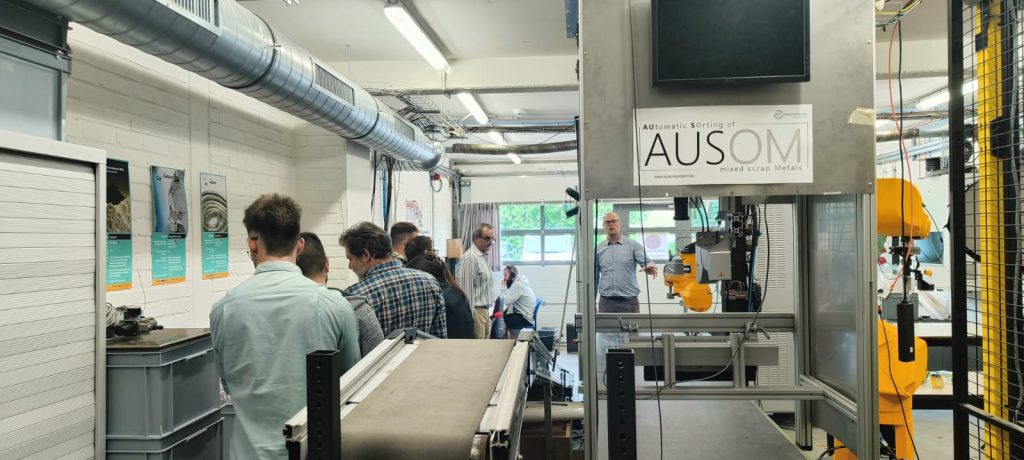
Recycling Data Game
The Alpha version or the RECLAIM Recycling Data Game (RDG) has been developed and tested by users of the target group.
The RDG integrates a citizen science approach to support public engagement with the recycling efforts of the project. It leverages a pool of images captured by the portable, robotic Material Recovery Facility (prMRF) image capturing software during its execution, in realistic waste management scenarios collected within the RECLAIM project by the project partners. Players engage in image annotation mini-games and challenges such as “Paint”, “Detect”, and “Categorise” each designed to motivate the players and improve the material recognition capabilities of the prMRF.
The game not only contributes to the development of advanced AI for material identification, localization and categorization, but also enhances player knowledge and awareness of recycling processes. The game’s design is being iteratively refined based on feedback from users, highlighting its educational value, user-friendly interface, and enjoyment, thereby aiming to promote broader public involvement in scientific research and environmental sustainability efforts.
Meanwhile, the project has achieved substantial outcomes, as previously highlighted in our blogpost. For instance, the project successfully evaluated the integrated performance of the fully assembled prMRF in realistic working conditions, as well as developed a simpler, cost-effective robotic solution specifically for waste sorting. More on this below.
PROJECT-UPDATES
RECLAIM successfully evaluated integrated performance of fully assembled prMRF in realistic conditions
Overall, as highlighted in our project updates blog post, despite the initial procedural challenges in acquiring and fitting in the necessary equipment into a constrained space within the prMRF, the good news is that full scale experiments have been carried out that showcase the prMRF’s capacity to facilitate material recovery in its intended working environment and receive feedback from its integrated operations.
Simpler, cost-effective robotic solution Robotic Recycling Workers specifically designed for sorting waste
Recent progress also includes successfully coupling and calibrating the robots with the vision system and conveyor movement, enhancing waste sorting alignment. RoReWos are cost-effective and outperform traditional robotic arms, offering superior performance within the same budget.
Our ultimate aim is to develop and implement a portable robotic material recovery facility tailored for small-scale material recovery. The project proposal exploits well-tested technology in robotics, AI and data analytics which is improved to facilitate distributed material recovery.
In future, the project plans to present its innovations at the ISWA booth at ECOMONDO green expo scheduled for November 5-8 in Rimini, Italy. This will be an opportune moment to display the project’s achievements, and perhaps live demonstrations from some of our prMRF’s technologies.
More specific details on what we plan to display at the expo will be available soon.
